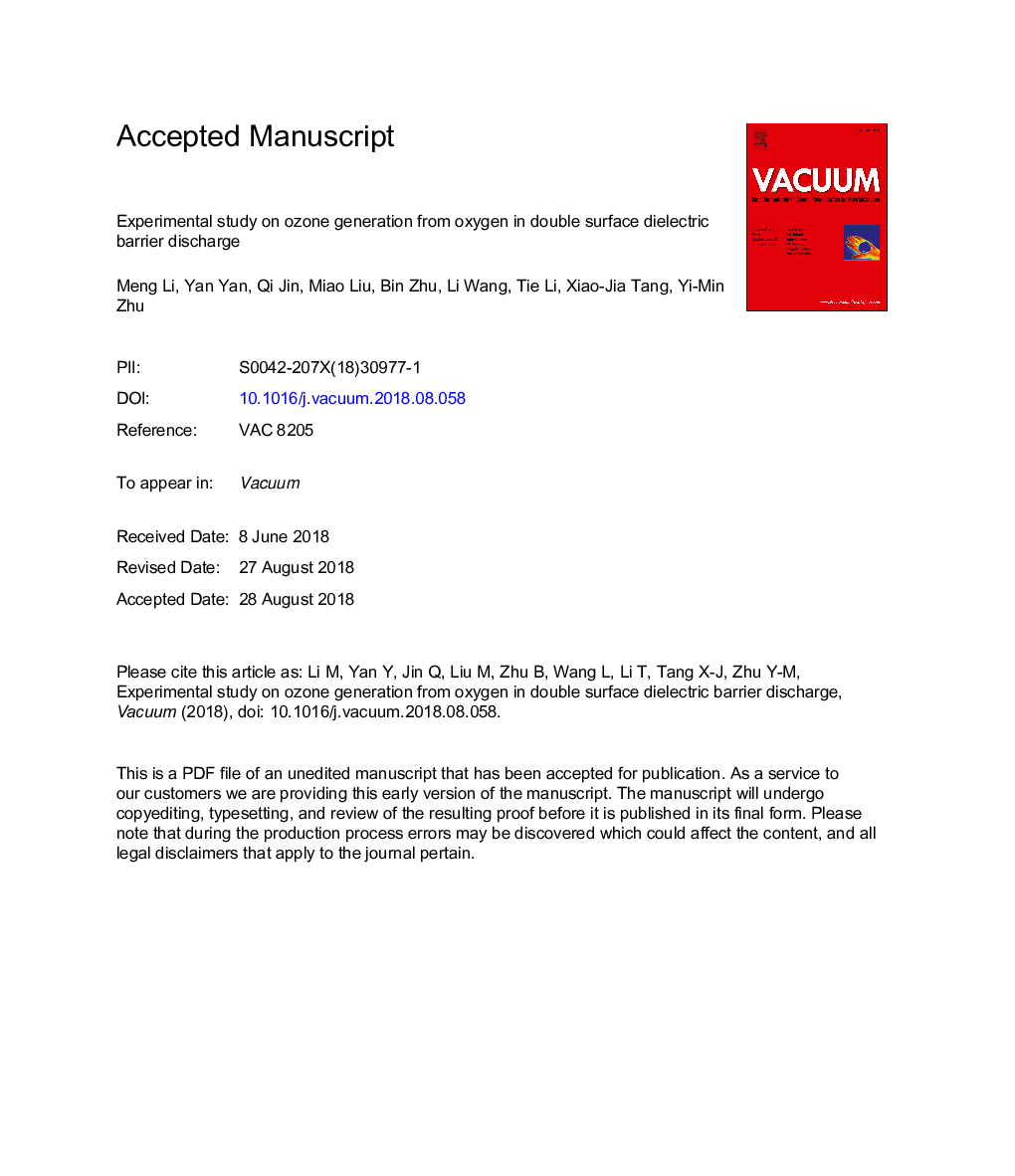| Article ID | Journal | Published Year | Pages | File Type |
|---|---|---|---|---|
| 10128809 | Vacuum | 2018 | 32 Pages |
Abstract
Double surface dielectric barrier discharge (DSDBD) can simultaneously form two uniform plasma zones for ozone synthesis with an AC power supply, thus exhibiting great advantages in achieving high energy yield at high ozone concentration. However, effects of the experimental parameters on DSDBD is urgently to be investigated to optimize the discharge reactor and provide references for high-efficiency ozone generator design. Here we present a systematical experimental study of the DSDBD in oxygen for ozone generation. The effects of important parameters (gas-flow mode, dielectric, discharge gap, etc.) on DSDBD in oxygen were studied, and the optimal DSDBD reactor was screened out. The optimal DSDBD reactor can achieve ozone energy yield of 317.7-130.0â¯g/kWh within ozone concentration of 12.7-56.2â¯g/Nm3 and exhibit an excellent stability during a 2-h continuous test, demonstrating its much better performance in ozone synthesis than other conventional DBDs. The discharge characteristics and the optimization results suggest that the superior performance of the optimal DSDBD reactor lies in its complete interaction of oxygen and plasma, large numbers of reactive species and electrons as well as favorable energy distribution of the reactive species.
Related Topics
Physical Sciences and Engineering
Materials Science
Surfaces, Coatings and Films
Authors
Meng Li, Yan Yan, Qi Jin, Miao Liu, Bin Zhu, Li Wang, Tie Li, Xiao-Jia Tang, Yi-Min Zhu,
